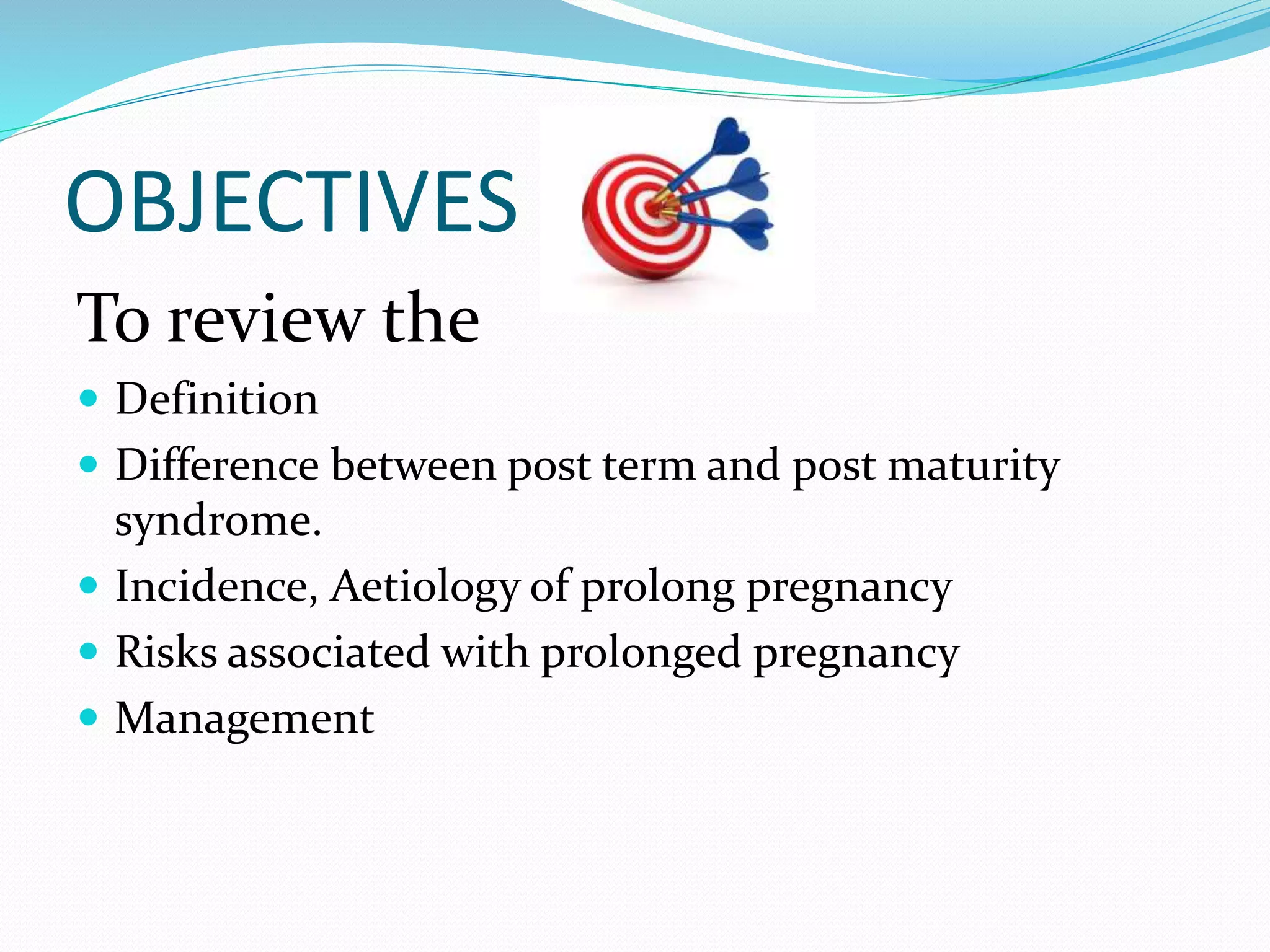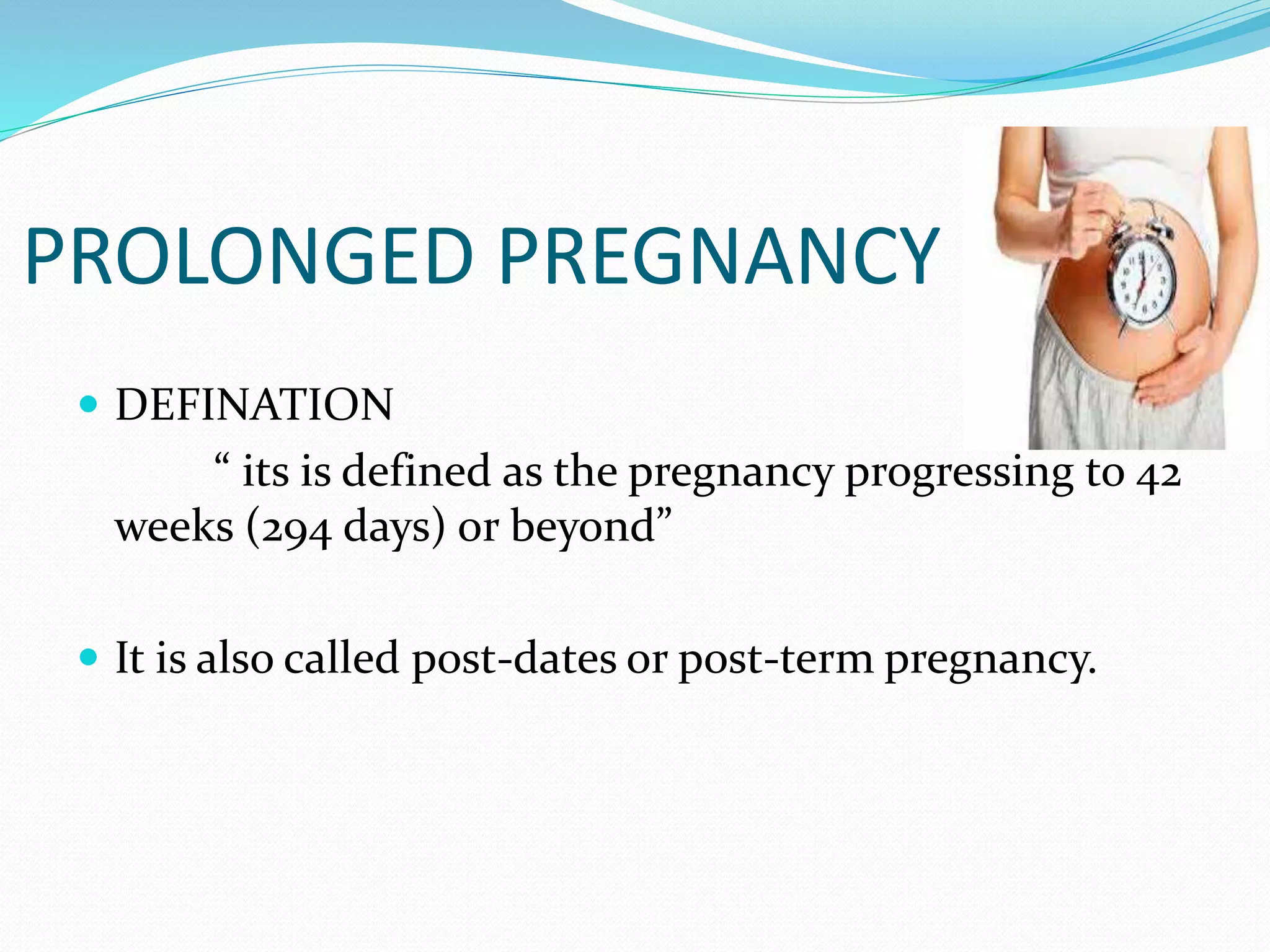This document discusses prolonged pregnancy, defined as continuing past 42 weeks of gestation. Risks to the fetus include stillbirth, distress, injuries from large size, and meconium-related issues. Maternal risks include anxiety, operative delivery, and infection. Management involves expectant monitoring with tests like CTG and ultrasound or inducing labor. Induction methods include membrane sweeping, amniotomy, prostaglandins like misoprostol, and oxytocin. Caesarean section is indicated if monitoring finds issues or induction fails. Guidelines recommend offering induction from 41 weeks onward.




























